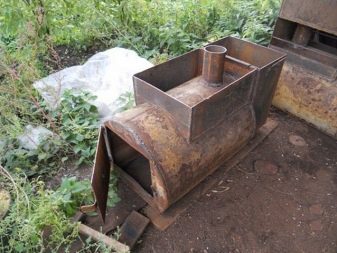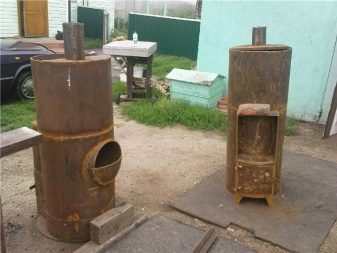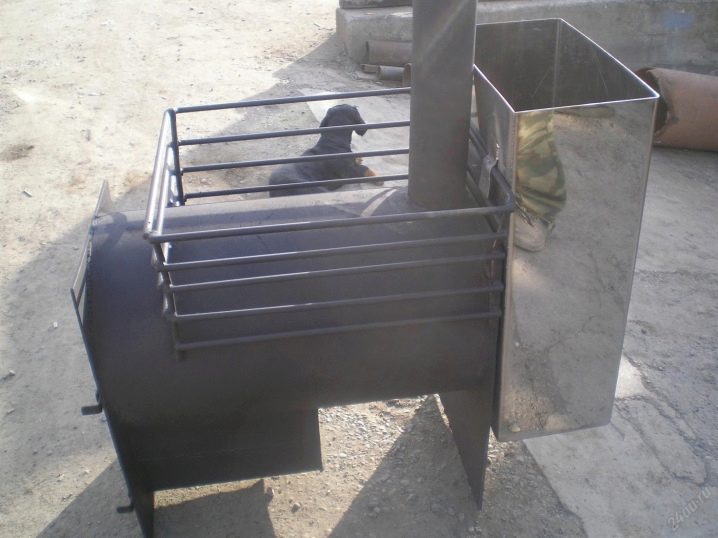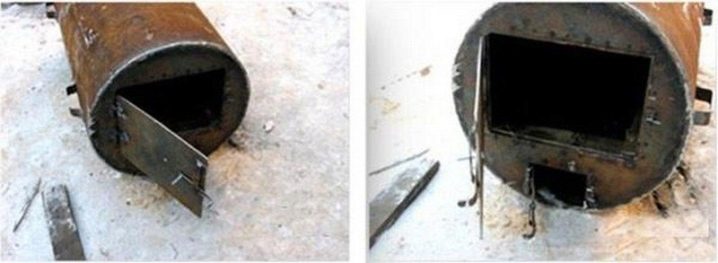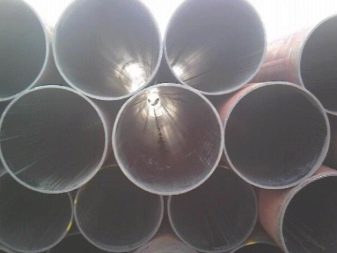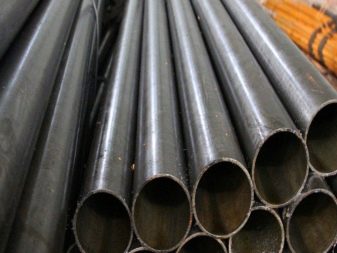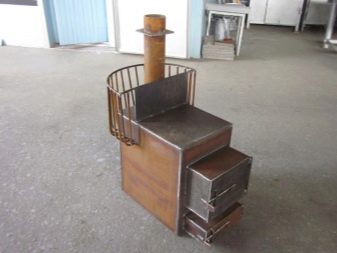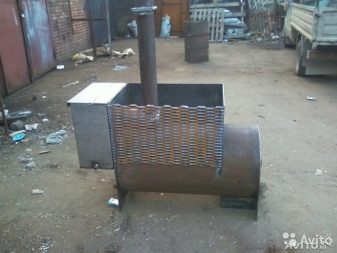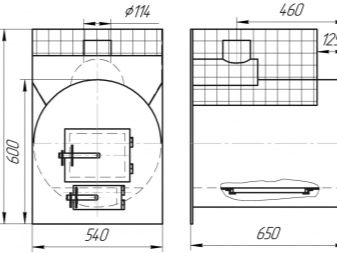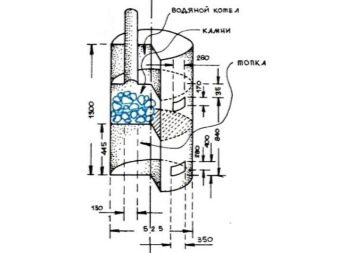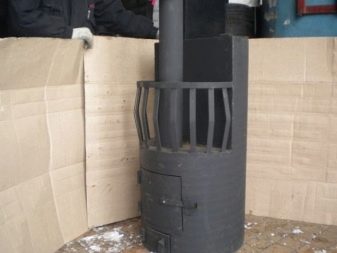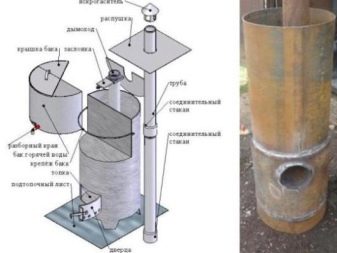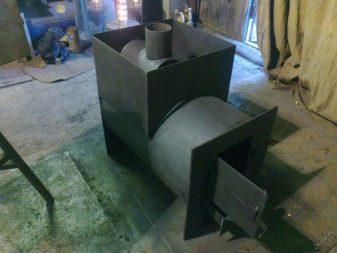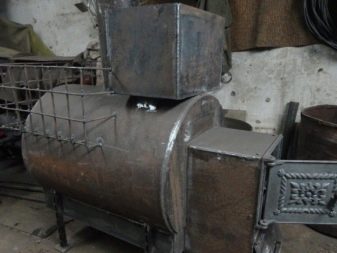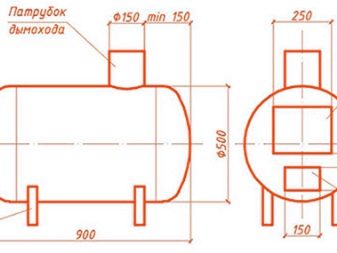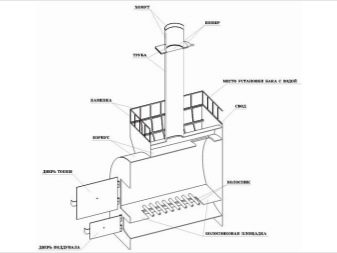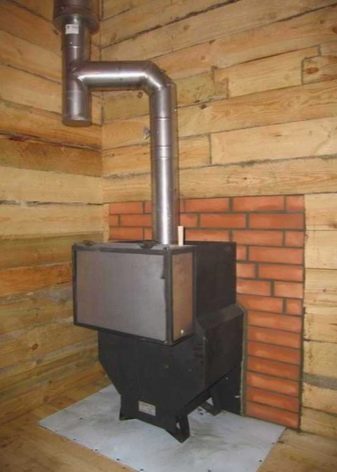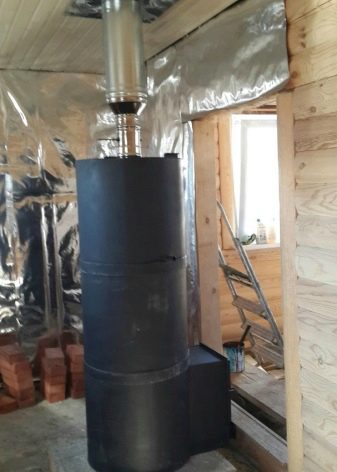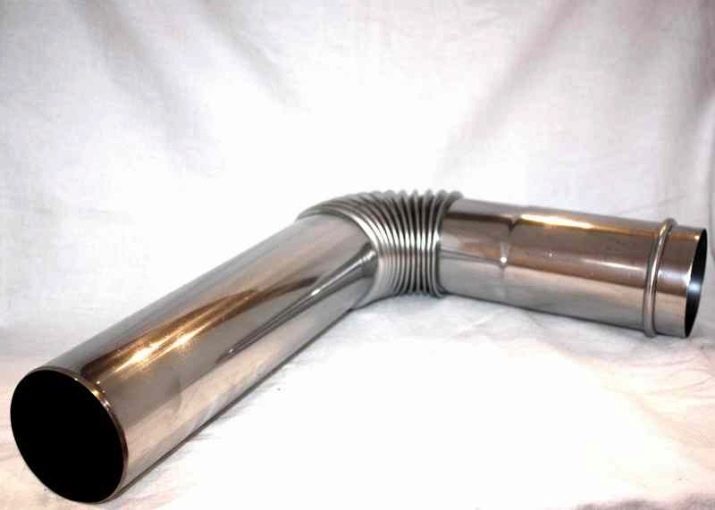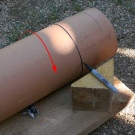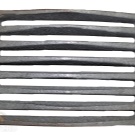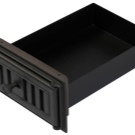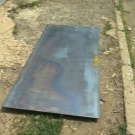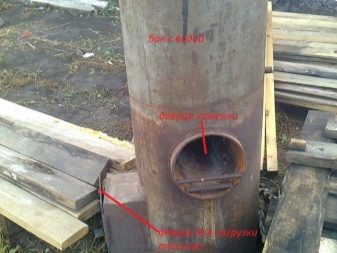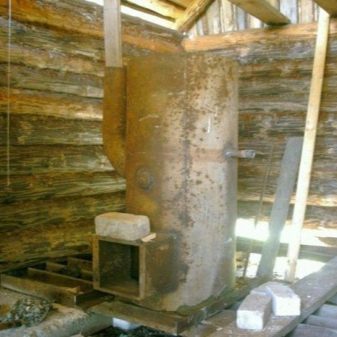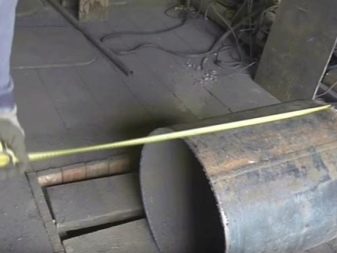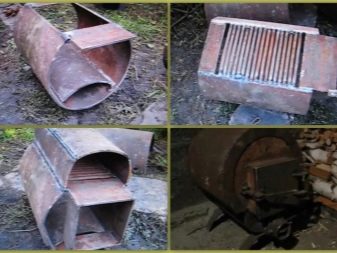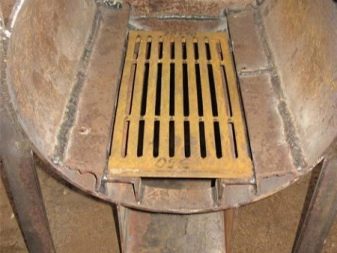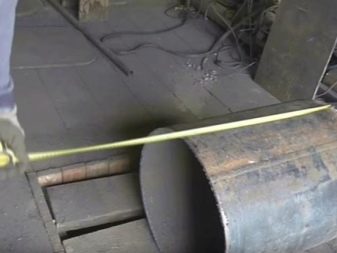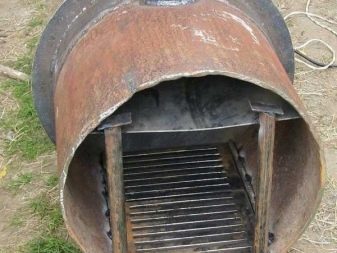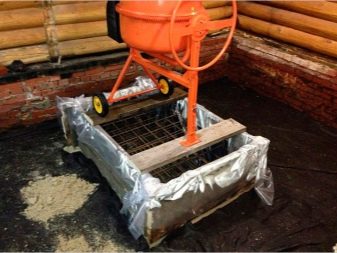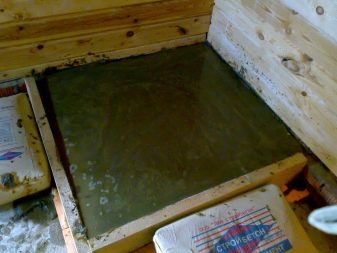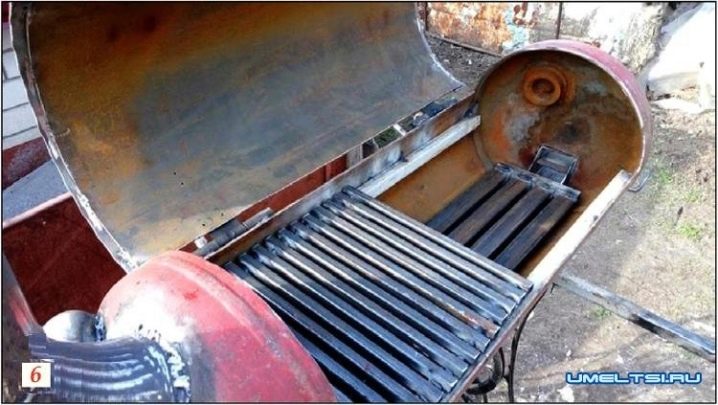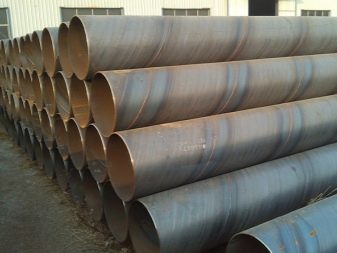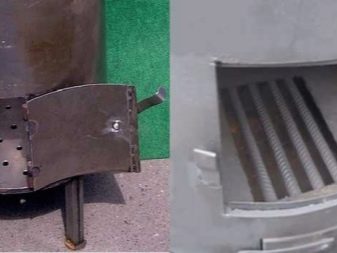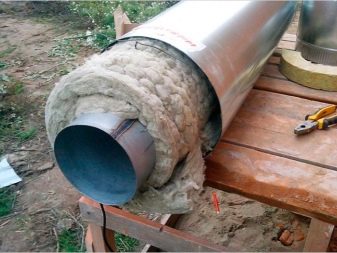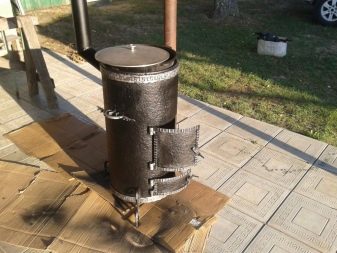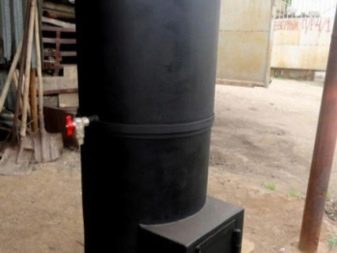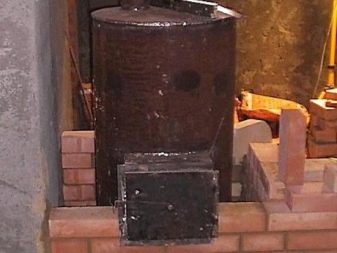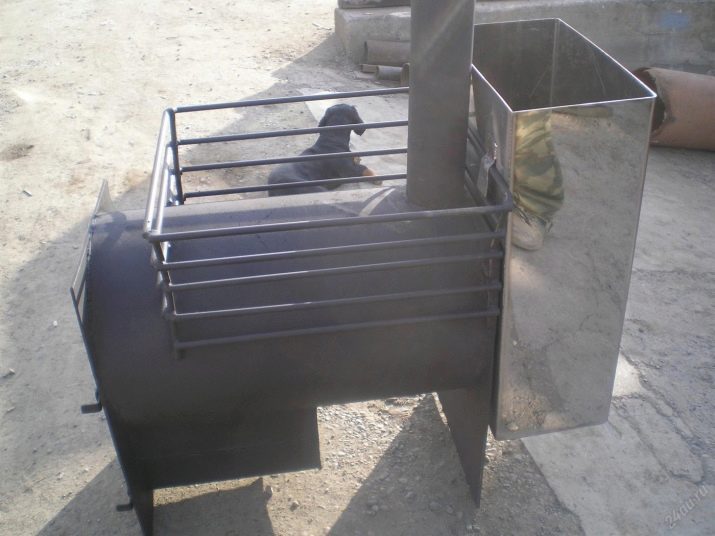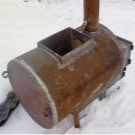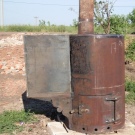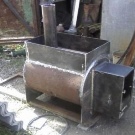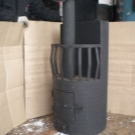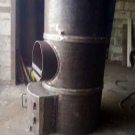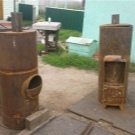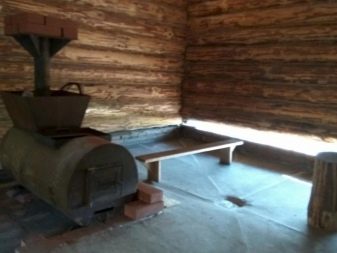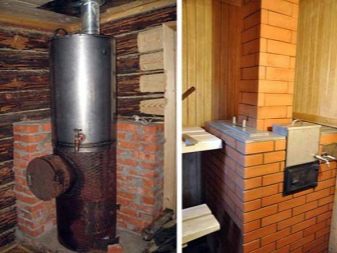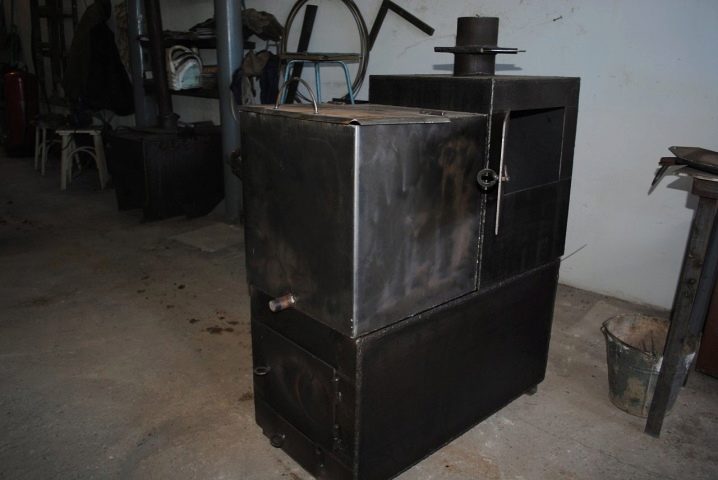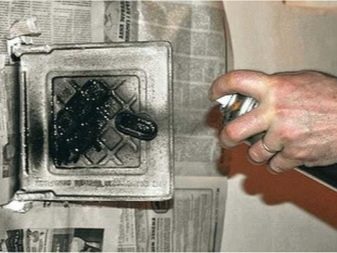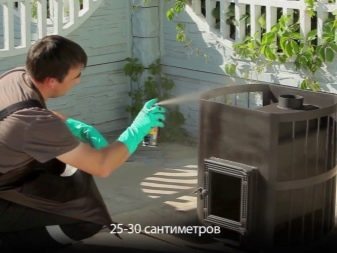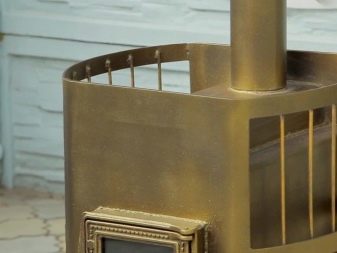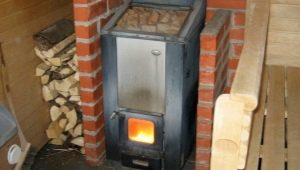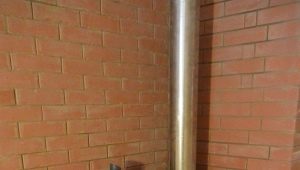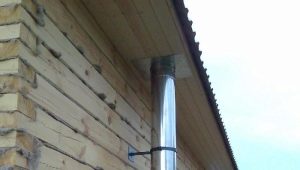How to make a bath stove out of the pipe?
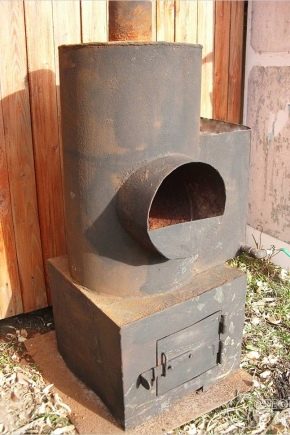
Metal furnaces made of pipes in most cases it is difficult to call an aesthetic piece of furniture, since, after all, their main functional purpose is to quickly and efficiently heat a steam room. However, a distinctive feature of such a furnace is the possibility of its independent production, which significantly reduces costs when installing a bath.
Selection features
The furnace for a bath from a pipe - the most widespread option of the heating device for a steam room of any size. Such a furnace qualitatively performs its functions, it is safe both at the construction stage and during operation. The main advantage is the possibility of self-erection of such a stove.
When choosing a specific stove, you need to consider the size and layout of the double room, as well as personal preferences. For a small area steam room, it is usually recommended to install a vertical oven from a pipe. This is a more compact option that does not take up much space in the room. The design of such an installation assumes the presence of not only the furnace compartment, but also an additional site for laying the stones, as well as a water tank for heating. Externally, the stove resembles a classic stove.
If the choice fell on this variety, then it should be remembered that the presented option has lower thermal qualities, and its combustion doors and the blower are placed in the double room.
If space permits, more preference should be given to the horizontal variety. There are also areas for laying stones and a container for heating water, but the doors and the ash pan are located at the end of the installation, and therefore they can be placed outside the double room, for example, in the dressing room or outside the bath, which greatly simplifies the kindling process.
The area of heating stones is much increased due to the greater length of this option, in the steam room increases the natural convection of warm air.
Among the main advantages of the steel pipes used for the bath stove are the following:
- mechanical stability of the coating;
- reliable heat dissipation;
- low coefficient of expansion when heated;
- the ability to retain heat even after burning wood;
- the ability to use any type of fuel;
- minimum welding seams;
- fast warming steam.
You can not ignore a couple of disadvantages of metal structures:
- metal warms up quickly, but it cools down just as quickly, that is, you need to add fuel quite often to maintain the required air temperature;
- heat is distributed unevenly throughout the space.
If we compare metal and brick stoves for a bath, the latter loses in such criteria as heating rate, probability of carbon monoxide poisoning, ease of manufacture.
When choosing a pipe made of metal for heating the bath, pay attention to the following points:
- check the strength of the structure;
- make sure the surface is not damaged or corroded;
- in case of defects, it is necessary to perform reinforcement with welded metal patches;
- You can make functional holes in corrosive areas.
Do not take high carbon or alloy steel. They are not suitable for making a stove. It is preferable to choose steel with a carbon content of up to 2%. Calculate high-carbon material can be the state of sparks during friction of the surface of the sandpaper. It has sparks of white in the form of stars, scattering in different directions, while sparks of low carbon steel are distinguished by a yellowish color and straightness. In the case of the same test, alloy steel will have red, orange or bright white sparks.
Bath furnaces are made not only from metal pipes, but also from sheet steel. More often from this material leaves a rectangular shape.
Compared with this installation, the round tube has the following advantages:
- the metal pipe is much easier in terms of production - in fact, it already is a ready firebox, in contrast to the sheets that should be cut, cut, assembled and welded;
- pipes - the most economical option;
- the process of heat exchange with ambient air in the presence of a round bath furnace is more efficient;
- in terms of the movement of flue gases, the finished round tube also turns out to be more selective;
- the service life of a round furnace is longer, even if we compare rectangular and cylindrical pipes made of the same material.
Scheme and dimensions
When choosing the most preferred variant of the pipe, it is necessary to take into account the internal section and thickness of steel. To do this, we look at the marking: for example, “400 * 7” is indicated, which means 400 mm is the diameter, 7 mm is the wall thickness of the profile pipe. For bath stoves, it is recommended to use pipes with a diameter of 500-600 mm and a thickness of 7-13 mm, but this is not necessary, the choice of the size of the metal pipe depends on the area of the steam room and the required volume of water.
The most common pipe size for a bath is 530 mm; such installations are considered optimal for standard steam rooms. Some baths cannot boast spacious steam rooms, they are used, rather, indeed, for washing, and not for long rest, and then small stoves are placed here, for example, with a diameter of 426 mm. If the space of the steam room allows, then a pipe with a diameter of 630 mm will do.
Vertical
Vertical type furnaces usually have a compact size. The grate bars and the heater are under each other, and therefore the diameter of the furnace is the diameter of the pipe.The manufacture of this variety is not difficult.
Horizontal
Assembling a horizontal version requires more laborious work. Tubular furnaces are used for steam rooms, they are distinguished by high strength indices and create conditions for effective heat transfer to the air of the sauna room.
Differences between vertical and horizontal types of furnaces:
- a flame in a vertical pipe goes a short way to the chimney in the upper part of the structure, the hot gases touch the sides of the body a little, and are mostly located in the middle;
- the horizontal variety allows hot gas to the top of the installation, after which the gas is released into the chimney due to the air dilution;
- the design of the vertical furnace warms the walls of the sauna room at high quality, but the floor and the air at the top of the room are not able to heat up effectively;
- the horizontal variant heats all parts of the space, except for the area adjacent to the floor, and the place under the firebox.
Before creating a furnace of any type, but especially horizontal, you need to make a competent drawing of the future device. Draw a diagram of the product, specify all the dimensions on it, and follow this instruction clearly.Errors made during the manufacture of the furnace, can affect not only the efficiency of the installation, but also threaten the health of tourists. In addition, it greatly simplifies the installation process.
The master, who first decided to do this work, is better to use a ready-made drawing or install a typical model.
How to do it yourself?
Selecting the pipe option, and drawing the size scheme, proceed to the self-assembly of the stove.
The main requirements for the installation of a homemade stove for a bath:
- installation of the pipe is made on the foundation with a 200-mm indentation from the wall, even if the mounted furnace has a small weight;
- in the area where the metal pipe will go outside, it is necessary to make a thickening of 120 mm;
- 500 mm - the minimum protrusion of the pipe above the roof;
- all wooden parts are treated with insulation material with a layer of clay;
- the surface of the chimney in the area between the ceiling and the roof passes through the stages of plastering, a lime mortar is applied to the material;
- Shelves should be located next to the wall where the oven stands.
The work will require the following materials and tools:
- pipe section for the body of the bath stove;
- a piece of pipe for the discharge of gas;
- metal sheet 10-12 mm thick;
- elements of the furnace, they can be bought or made independently: the grate, the doors for the separation of the firebox and blew, ashpit;
- Bulgarian;
- welding machine.
As noted above, you can make your own stove fittings with your own hands, but the purchased parts will cost you a lot, but they will still speed up the work, and the result will be more aesthetic.
At the heart of the assembly technology of the vertical variety is a 1.5-meter piece of pipe.
The assembly of the vertical version takes place at certain stages.
- We develop a formwork for the foundation of a square shape. To determine the size should be added to the diameter of the side and a half meters. For reinforcement it is necessary to place reinforcement in the concrete. The minimum thickness of the foundation is 200 mm. After the concrete has set, bricks are laid on the surface.
- We take a meter-long piece of pipe, cut a hole 50x200 mm from the bottom, during operation this section will serve as an ash ash. Ensure that the bottom of the workpiece is completely flat.
- We strengthen the bottom of the firebox above the door blew. We cut a metal circle with a thickness of 12 mm and arrange a grate in the center of the sheet, which is a grid with the dimensions of the width of the rods corresponding to the distance between them.
- We retreat from the bottom of about 50 mm and cut a hole under the furnace. Door parameters - 250x300 mm. Weld the loop and equip the sash.
- At the top of the firebox, we mount a rectangular square of metal, welded at the corners to the pipe, serving as a cutter. The air that will spread between the walls of the pipe and the edges of this sheet will be better heat the walls of the device.
- We have a heater over the structure. We develop its lower part from a lattice with rods 12-16 mm thick. Pull back up 50-100 mm and weld it. The door is made according to the principles of the furnace door.
- The water tank can be made of the remaining 1.5 meter long sheet, its bottom will close the top of the heater. In the middle of the disk, which should brew the bottom, drill a hole under the pipe. We will organize a removable cover, below we form the crane.
Vertical sauna stove ready. For manufacturing there is no need for expensive materials and modern high-tech tools. But still the master must have a welded practice.
For the manufacture of a horizontal furnace will require a piece of pipe length of 0.8 meters. The door is usually installed in the waiting room, it is impossible to mount a water tank in the pipe in this design.
Assembly principles involves several steps.
- The first stage is again the arrangement of the foundation. We do it the same way as when installing the vertical option.
- Cut a rectangle of 400x800 mm with parameters 100x20 mm thick in the metal, weld the grate into the center.
- Inside the future heater we weld the cut out blank. Make sure that the welded seams of the grate are at the top, not at the bottom. Then they will get a lesser load.
- Cut a rectangular metal plane, rounded at the top, 600 mm wide, 700 mm high. This will be the front wall of the stove.
- In the front we make holes for the firebox and ashpit, we mount the doors.
- For the back wall we make a rectangle cut out of metal. Preparation parameters - 700х900 mm.
- We create in the upper part of the case behind the hole 150x150 mm. From metal sheets, we organize a vault and equip it from above. Cut the section in the arch under the place of subsequent welding of the pipe, move it forward 100 mm.
- Weld the pipe. The arch - the bottom of the heater. Making the front wall.
- Water tank, bought or welded by hand, mounted on the back of the structure.
After assembling the furnace of any type, it is necessary to clean it from scale and rust.
Let us dwell in more detail on some aspects of the installation of a self-made oven.
Foundation
The first stage for the construction of the furnace. It should be carried out in accordance with all rules and requirements.
To create perform the following steps:
- we bring down square formwork 200 mm high;
- evenly squares 200x200 mm lay out the reinforcement longitudinally and transversely in one layer;
- fasten the reinforcement elements with knitting wire at the joints;
- at the edges of the lattice we drive in four segments of reinforcement, we attach a lattice to them.
Two weeks after pouring it is necessary to open the windows and doors in the room, and lay the foundation with wet rags. This will prevent the occurrence of cracks on the surface. For a couple of weeks, rags are recommended to be wetted.
Grate
The grate is a special grating designed to provide traction.
Collecting the grate is also an easy task. For this:
- cut a rectangle of the required parameter from metal, that is, so that it fully corresponds to the internal dimensions of the pipe;
- we cut the center in the prepared plate so that there are areas for welding along the edges;
- weld metal bars horizontally or vertically.
Tips for making
Before you start assembling a bath furnace with your own hands, Use the advice of professionals.
- Try to get trimming spiral pipes, they are more accurate, not so elliptical and made of more suitable steel. You can also buy them for the price of scrap metal. You can use seamless pipes, but only for the manufacture of small items.
- Many people prefer to use metal rolled stainless steel to assemble the firebox, water tank and chimney. This is a good option, but it must be remembered that welding will require the use of stainless steel electrodes or special welding wire.
- During the working process, it is recommended to weld the supports to the pipe so that it does not roll and does not complicate the work.
- When constructing a vertical model, it is required to leave at least 1/3 of the furnace diameter with openings for smoke to enter the chimney.
- The outer door for stones is recommended to be placed so that during operation it is directed in the opposite direction from the place where people rest.This will save visitors to the bath from burns with hot steam if moisture gets on the hot stones while maintaining the heat.
- Many craftsmen are advised to place the weld under the grate, as the connecting seams are destroyed in the first place under the influence of temperature.
- It is recommended to warm the outer walls of the chimney with a thick layer of mineral or basalt wool to reduce the likelihood of corrosion inside the structure.
- It is necessary to fill the tank with water in advance of kindling - moisture trapped on a metal surface can cause burns from a steam blow.
- For decoration, it is recommended to cover the metal furnace with refractory paint.
- If the oven is covered with paint, then before installation it is better to heat it in fresh air. Thus, excess paint will burn without causing harm to the human body.
- Cover the stove with a brick screen. This will provide a more uniform distribution of heated air, as well as save the rest from severe burns.
Successful examples
Learn from the photo on the Internet options for vertical and horizontal ovens.Among them are aesthetic and painted models, and simpler varieties, but the design, manufacturing and installation are not particularly different. To do this, it is not necessary to be a professional, the main thing is to follow the scheme and the specified dimensions.
Brick lining
In order to make a metal furnace more aesthetic, it is recommended to overlay it with bricks.
Styling examples may be different.
- Solid facing. Provides fast heat transfer, which somewhat reduces the performance of the heating device. Performs a purely decorative function.
- Heat shield. It is a small stone fence. Increases the heat and creates a comfortable environment for guests in the immediate vicinity of the furnace.
- Facing convector with ducts. The most versatile option. Suitable for any metal construction, regardless of the area of the room.
Burner
Another successful example for decorating a metal structure is bluing. This method is a surface treatment using chemical compounds that not only give the device aesthetic properties, but also permanently protect against corrosion.
The applied layer will last longer if the metal surface is very thoroughly cleaned beforehand. To do this, you do not need to buy professional formulations, you can independently prepare a solution of butyl alcohol (4 grams), phosphoric acid (150 grams) and water (1 liter).
After cleaning and removing acid residues, it is necessary to melt the furnace to 150 degrees and cover the metal with a layer of caustic soda for an hour. It will be more convenient to spray the composition.
Coloring
For painting metal furnaces, you can now find special heat-resistant paints. When choosing a type of paint, you need to remember that a smoother and more shiny surface gives off much less heat, and a rough pipe, painted in a dark color, spreads heat to the maximum. Aluminum paint is not recommended for this purpose.
A self-made sauna stove is not only an excellent alternative to the factory version, but also an opportunity to carry out a project that will meet individual conditions - steam room, preferences for steam quality (dry or wet), and personal needs.
Video master class on making a bath stove from the pipe, see below.

